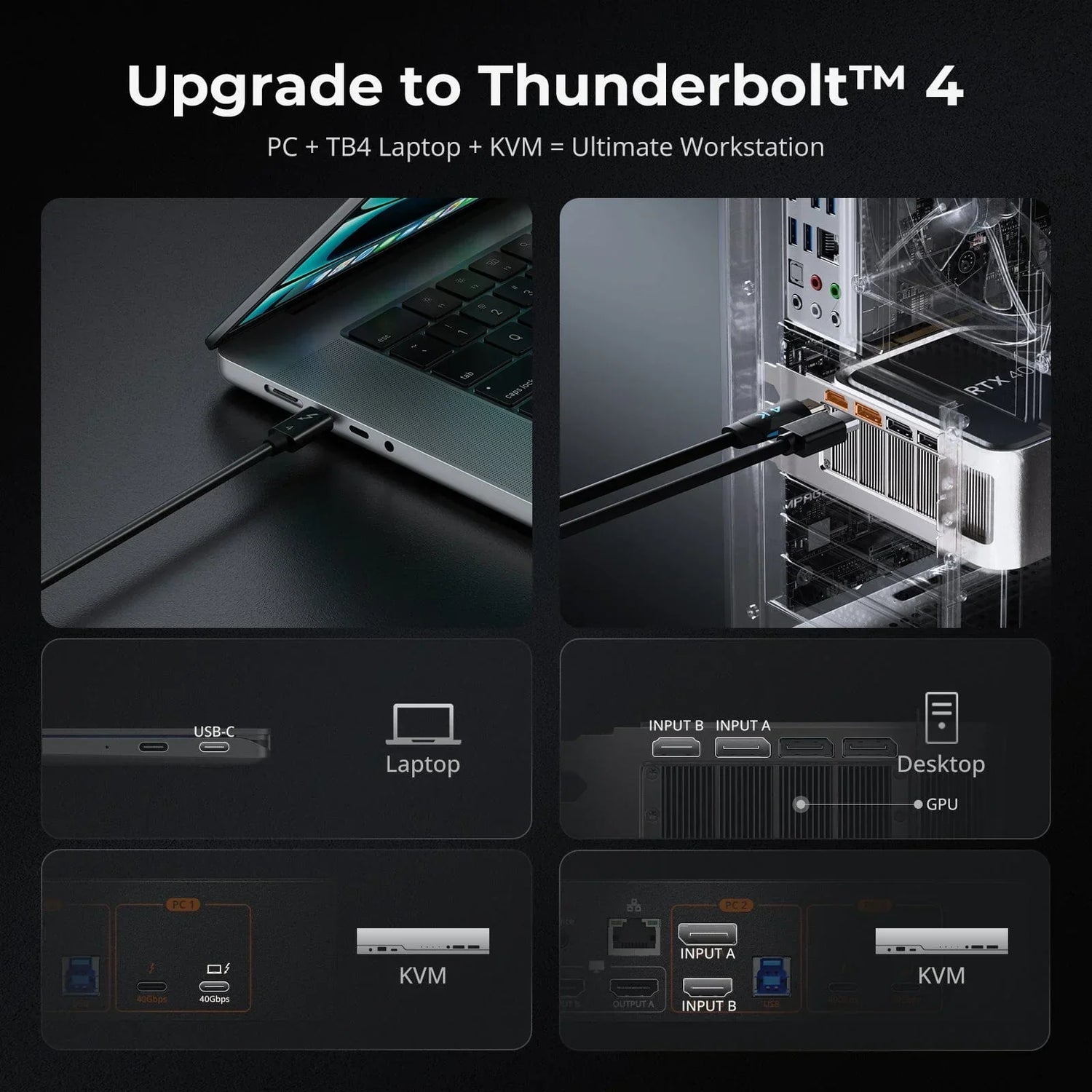Core Technology of KVM Switch
Advantages of Multi-Screen Settings
Technically, multi-monitor support requires KVM switches to simultaneously process video signals from multiple computers and distribute them to corresponding monitors. This involves not just signal splitting but also precise control of resolution, color depth, refresh rate, etc., to ensure consistent and synchronized output on different screens. TESmart KVM switch design teams need to ensure these technical details are adequately addressed, providing a seamless and synchronized multi-screen experience.
USB 3.0 and High-Speed USB Data Sharing:
In professional work environments, such as graphic design, video editing, and software development, project files are often large and require frequent movement and backup. TESmart KVM switch’s USB 3.0 high-speed transmission feature can significantly reduce the time needed for file transfers, improving work efficiency. For example, in post-production video editing, editors need to transfer large amounts of raw video footage from one workstation to a server for rendering. The high-speed capability of USB 3.0 ensures this process is fast and coherent, avoiding long wait times and accelerating the completion of the entire project.
High-Quality Image and Audio: Support for HDMI 4K 60Hz and HDR10
In professional fields like film production and graphic design, high resolution and color accuracy are non-negotiable. Using TESmart's KVM switches, professionals can connect multiple computers to one or several 4K monitors, not only precisely editing 4K content but also seamlessly switching between different workstations, greatly enhancing workflow efficiency. For example, a video editor can edit footage on one workstation and color grade on another, all facilitated by TESmart’s KVM switch on the same or multiple monitors, ensuring color consistency and image precision.
In gaming and home entertainment scenarios, the combination of 4K and HDR is also highly popular. Gamers and entertainment enthusiasts, connecting gaming consoles and personal computers through TESmart KVM switches, can experience immersive gaming visuals and quickly switch to computers for other work or entertainment activities, like watching 4K movies, without needing to reconfigure devices and wiring.
Reducing Input Latency
Latency issues in KVM switches mainly involve signal transmission and processing speeds. When users input commands through KVM switches, signals need to be transmitted from the keyboard or mouse to the switch, and then from the switch to the target computer. During this process, each signal conversion and transmission could introduce latency. High-quality KVM switches, like those offered by TESmart, use advanced hardware and optimized software algorithms to minimize these delays, ensuring quick response times.




